The daughter of rodeo-riding parents, Tamar V S McKee has parlayed her roots with horses into an anthropological study of the many facets of the horse world.
The doctoral candidate in cultural anthropology is putting the finishing touches on a dissertation that examines the Kentucky horse world, up close. Doing field work at two Thoroughbred Retirement Foundation facilities, and elsewhere in Bluegrass country, she has studied the horse-human relationship, the inner conflicts polarizing the horse world, and so much more.
In this week’s Clubhouse Q&A, McKee, an equestrian and academic, discusses her exciting work.
Q: You’re writing a dissertation on the horse world? Wow! Please walk me through the genesis of this idea
Tibet is, in part, where the OTTB dissertation originated.
Let me explain.
After earning dual Masters degrees in anthropology and museum studies at CU-Boulder, I traveled to Tibet in the summer of 2005 as a teaching assistant for a study abroad program, and exploratory curator for a contemporary Tibetan art exhibition I was working on.
In the back of my mind, however, I was seriously contemplating pursuing a Ph.D. in cultural anthropology, and after years of Tibetan art research and natural history museum work, I wanted to return to my equestrian roots and study the horse culture of Tibet.
So in 2005, I traveled to a few different horse festivals in eastern Tibet (officially located in the Chinese provinces of Sichuan and Qinghai) to see if there was a viable research project there.
Indeed there was!
What was most striking, other than the human-horse relationships, was the fact that Tibetans were allowed to gather so en masse, celebrating one of the most traditional aspects of their culture (horses), while living under a national government that only three decades earlier had tried to eliminate any of the “old customs” of Tibet , such as these festivals.
I was struck by the paradox, and always predicted that these festivals could become sites of Tibetan resistance against the Chinese state.
Then, in 2007, exactly that happened: a nomadic chief got up on stage at one of the most popular festivals for tourists and locals a like and spoke out against the Chinese state.
The festival grounds went into immediate lockdown, and the chief himself was eventually sentenced to eight years in prison. (I wrote a few papers about this event).
During this whole time, I had already gotten accepted into, and started the Ph.D. program, at the University of British Columbia; little did I know that I would watch my research sites disintegrate into even more protest and chaos in the years to come.
During the 2008 Olympics Beijing, Tibet was in lockdown due to revolts. This meant no research visa and no Ph.D. dissertation project could be done there.
Q: It must have been devastating to see your research plans evaporate because of the Tibetan unrest.
It was a sad, difficult time, not so much because I lost my research project, but because I watched the Tibet I once knew drown in violence, repression, and irreversible cultural change.
There has been a concerted effort to re-settle Tibetan nomadic communities, and herds of horses, yaks, sheep and goats have been annihilated, not to mention the human life.
In the same regions where I wanted to carry out my research, people began setting themselves on fire (in 2009) to protest the Chinese occupation of their ancestral lands.
These self-immolation protests continue to day—one just happened this week, in fact.
Never would I have thought such acts of desperation would become possible when I was caravanning to horse festivals, years earlier, during a magical summer.
So, after the horse culture of Tibet project fell apart, I took some time to contemplate if I even wanted to continue forward with a Ph.D., much less one focused on the socio-cultural dynamics of the human-horse relationship.
Then I visited a relative in the Bluegrass Region of Kentucky, and realized that there was a thriving, complex horse culture right here in the U.S. within the Thoroughbred-racing world.
I began shaping a project around the contemporary state of Thoroughbred horse racing in the Bluegrass, and I as started shaping my research, I kept coming up against the question and issue related to what happened to the horses after they raced. And, I had further questions about what the industry and others were doing about it.
Q: Tell me about your research in Kentucky.
After the revisions were accepted, ethics board passed, and car packed up with my belongings and my dog, I moved to a small horse farm in Scott County in late January 2011 to begin my “fieldwork.”
To do this kind of work, I not only placed myself in the horse capital of the world, Lexington, and the surrounding Bluegrass region, but I placed myself in the troubled heart of the OTTB “rescue” by studying two TRF programs there.
One was a re-training program located in the Kentucky Horse Park, and the other an inmate vocational program at the local minimum-security prison.
In those two OTTB worlds, surrounded by the larger Thoroughbred/horse culture of the Bluegrass, I experienced the daily lives of the people and horses involved.
I volunteered cleaning out stalls and riding the less-fractious horses; I shadowed farm managers and interviewed inmates. In doing all of this, I not only collected “data,” but I built a perspective and understanding that I would have never received by just reading and opining about these programs.
I saw, first hand, the impact of Joe Drape’s New York Times article on the TRF in March 2011.
That article woke a lot of people up, in the racing industry and nonprofit world of equine rescues alike; I was able to witness and document many revelations and devastations from that article simply because I was at the right place at the right time, and able to talk to the people affected.
Q: How did the worlds of Tibet and Kentucky compare?
By looking into the rescue horse culture of the Bluegrass, I realized I was still dealing with issues I saw in Tibet: people were grappling with a world evolving away from horses as they once knew them.
Horses are still a part of our cultural worlds. They’re in our stories, common expressions, horse shows, and racing industry, but more and more, human communities are making the conscious effort to keep horses around, as the culture as a whole has shifted away from them.
But as we still cling to bygone equestrian days, the literal and symbolic space available for horses shrinks daily.
One of the biggest revelations I had during my fieldwork research was that re-training racehorses was not a new phenomenon of the 21st century. For example, back when there were more roles and jobs for horses, if a horse was not a racer, he could be re-purposed as a hunter— this logic even applied to Man o’ War.
It was only when the streamlining of horse purposefulness started after WWII did the field of possibilities narrow for U.S. equines, and, to paint with a very broad brush, it became more of a cultural practice to manage equine populations with processing plants than adapting breeding, sales, and social roles to the times.
While the horse world is adapting and adjusting, it took some hard lessons to get motivated.
And efforts are still muddled by polarizations between human communities who, ironically, hold one core thing in common: the horse.
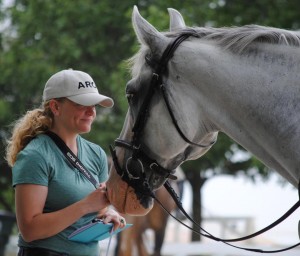
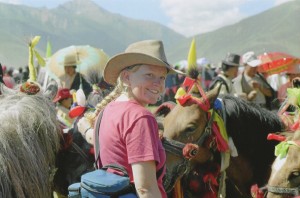
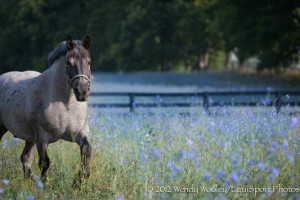
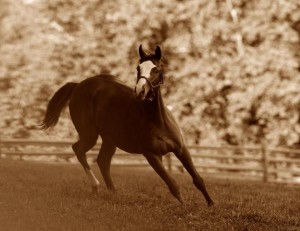
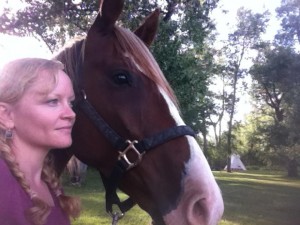


Now THAT will be a dissertation I would like to read! A subject near and dear to my heart, that fascinates me as well. I really hope that when Tamar has finished her work, you are able to publish a link. I am especially interested to read about the impact of the Drape article.
Thank you for reporting about this very worthwhile effort!